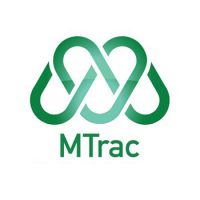Latest News
Decarbonization, digitization and decentralization are accelerating the countdown to a new energy world faster than expected

Renewable energy technology advances, innovation in storage and digitization and increased distributed energy generation are accelerating the pace of the global energy transition, according to the latest EY research in collaboration with IDC, a leading global analyst house.
A year ago, EY teams and IDC mapped the major drivers to determine when three tipping points would forever change the way utilities do business and set the industry on a countdown to reinvention. The latest analysis, covering Europe, the US, Oceania, the Gulf Cooperation Council (GCC) countries, China, India and Latin America, indicates that these drivers are progressing faster than even the most ambitious estimates, bringing forward the tipping points by as much as two years.
Benoit Laclau, EY Global Energy Leader, says:
“A revolution in the power sector is driving rapid change in renewable energy supported by digital technologies, the falling cost of battery storage, and empowered consumers. These are quickly ushering in a new energy system, transforming our world into one where cleanly generated electricity will power almost every aspect of our lives”
The research identifies four key forces creating a combination of factors that compress the timeline to a new energy world.
Force 1: Better, cheaper technology
As a result of the accelerating shift toward utility-scale renewables, complemented by declines in the cost of decentralized generation-plus-storage solutions, 2018 is the seventh year in a row where new renewable energy capacity outstripped new conventional energy installations. Energy and digital technologies that accelerate renewable deployment, such as battery storage, electric vehicles, artificial intelligence and machine learning, have moved quickly from being emerging trends to integral parts of the energy system. The research indicates that battery innovation — in particular, the adoption of utility-scale storage — marks a major turning point that will drive momentum in other regions.
Force 2: Policy revisions and more ambitious clean energy targets
Around the world, governments are positively revising renewable energy targets, with many mandating big increases that are quickly shifting their country’s energy mix. As technologies and markets mature, countries are increasingly moving away from some of the policy mechanisms that drove early uptake in renewables. While feed-in policies remain the backbone of national support schemes, renewable tenders are becoming prominent.
Force 3: Renewable and behind-the-meter generation gaining momentum, especially among corporates
The analysis indicates that a powerful mix of consumer demand, sustainability targets and a desire to cut costs and secure energy supply is pushing companies to forge their own power purchase agreements (PPAs) or self-generate electricity. For many businesses, the main driver is economics, because significant reductions in renewable energy costs, as well as maturing market and policy environments, have made renewables an attractive source of energy in their own right. Meanwhile, the uptake of solar photovoltaic at a residential level continues to accelerate beyond expectations and community energy schemes are on the rise, impacting energy companies’ market share.
Force 4: Stakeholder action is reshaping energy investment
In the past few years, the funding landscape of the energy sector has changed significantly, with renewables and energy technologies attracting new types of funders. This includes private equity firms and venture capitalists who seek investments with smaller time frames and bigger potential for innovation. One of the major impacts seen is from activist investors as well as regulators, customers and the public, all of whom demand companies to focus on cleaner sources of electricity.
Jean-Francois Segalotto, Associate Research Director, IDC Energy Insights, says:
“This research and analysis has resulted in a multi-regional cost parity model for the energy industry that takes into account both distributed generation and storage, as well as several other enabling technologies. For those energy companies that are actively rethinking their business model, the results of this research provide a concrete horizon against which they can benchmark their action. For those that haven’t yet done so, the data provides one of the strongest calls to action.”
In addition to the above forces, “the electrification of everything” is a major factor that is underpinning this change in the energy mix. By 2050, nearly, 70% of the world’s population are expected to live in urban areas and 50% of total final energy consumption will be electricity. This indicates an electrification of buildings, heating, industry, data centers and transport being the critical lever in the building of sustainable climate-safe cities. In major energy markets, the phasing out of internal combustion engines in favor of electric vehicles (EVs), is a very visible and high impact part of this trend, and is bolstered by initiatives to reduce emissions and create urban mobility networks.
Laclau says: “As the countdown to a new energy world accelerates and a new distributed model emerges, energy companies must be agile and take on a proactive role in the transformation of the sector. But the challenges of the sector cannot be solved in isolation. When industry players, regulators, governments and companies in adjacent sectors work together, there is greater potential to unlock the innovation needed to address the most complex energy challenges.”
SOURCE EY
Blockchain
Ebang International Reports Financial Results for Fiscal Year 2024
Blockchain
Chameleon Finance Launches Green Finance Initiative to Advance Sustainable Digital Asset Infrastructure
Blockchain
Ov Finance Upgrades Blockchain Infrastructure to Deliver Faster, Safer Digital Asset Trading
-

 Blockchain6 days ago
Blockchain6 days agoBlocks & Headlines: Today in Blockchain – April 23, 2025 – EDPB, Binance, MicroCloud, Nile Coin, TruaBroker
-

 Blockchain5 days ago
Blockchain5 days agoBlocks & Headlines: Today in Blockchain – April 24, 2025 (Decrypt, CoinDesk, Cointelegraph, 80 Level, UNDP/BGA)
-

 Blockchain4 days ago
Blockchain4 days agoBlocks & Headlines: Today in Blockchain – April 25, 2025 | BitNile, Dutch Blockchain Week, Citigroup, Philippine Blockchain Week, D.O.G.E Foundation
-

 Blockchain7 days ago
Blockchain7 days agoBlocks & Headlines: Today in Blockchain – April 22, 2025 (Activity‑Weighted Consensus, Pectra Upgrade, Yoki Legacy, Verae–Evercycle, Earth Day)
-

 Blockchain5 days ago
Blockchain5 days agoBlaqclouds Board Approves 30-Day Revenue Acceleration and Ecosystem Monetization Plan
-

 Blockchain Press Releases5 days ago
Blockchain Press Releases5 days ago10% Rebate: Bybit Card Introduces USDC Cashback
-

 Blockchain Press Releases4 days ago
Blockchain Press Releases4 days agoBybit Exchange Gold & FX Trading Hits All-Time-High As Gold Prices Soar
-

 Blockchain Press Releases6 days ago
Blockchain Press Releases6 days agoCompass Mining Partners with NiceHash to Provide Discounted Pool Fees to Customers















































